When we think of Kenya, we immediately imagine a safari in the middle of the African savannah, to see the Big Five animals in their natural environment. The most famous places to do this are the Maasai Mara National Reserve and Amboseli National Park. But while these two destinations are indeed absolute must-sees on a Kenyan safari, many other places also offer a rather amazing spectacle, and Nakuru National Park is certainly one of them. Located in the Great Rift Valley, Lake Nakuru is renowned for its high concentration of rhinos and other herbivores. What's more, it's one of the country's best birdwatching spots! 🦩
What to see around Lake Nakuru
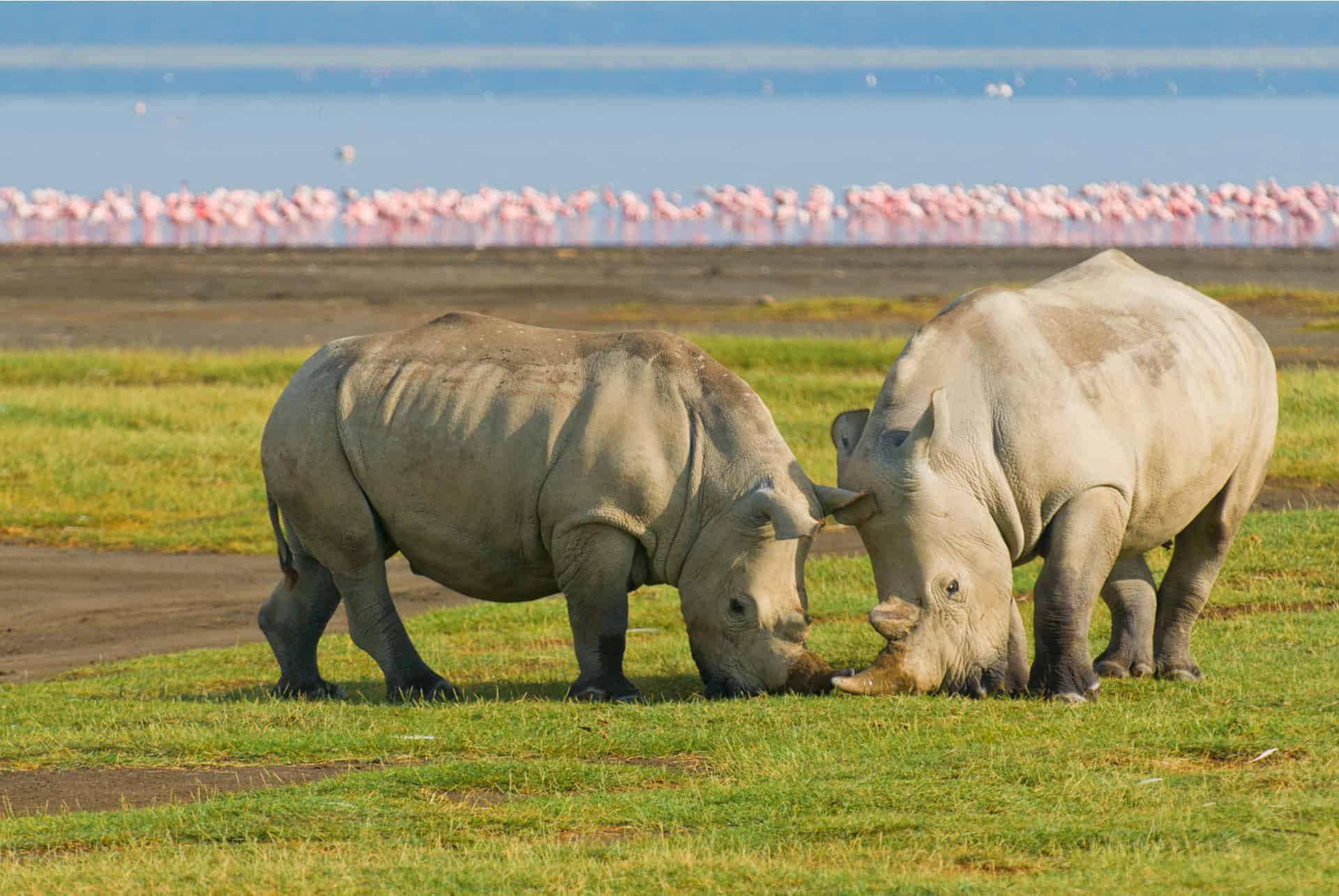
Lake Nakuru is a Ramsar site, i.e. a wetland of national importance. It lies within the Nakuru National Park, which was founded in 1967 and is a UNESCO World Heritage Site. Lake Nakuru itself occupies around a third of the National Park's surface area, which covers almost 74 square miles (190 km²).
The park is far from being the largest in the country, but it's not without its own interesting points of interest. On top of being particularly accessible, it's a perfect place for animal watching. It's home to a wide variety of wildlife. The diversity of the scenery is equally astonishing, with lakes, of course, but also fertile plains, rocky valleys, mountainous areas and forests.
The birds of Nakuru National Park
Birdwatching is undoubtedly the main attraction in this park. More than 400 species of birds live around Lake Nakuru: pelicans, kingfishers, storks, herons, ostriches... and of course the stars of the show, the pink flamingos! 🦩 This saltwater lake provides an ideal environment for these birds, which feed on the algae and crustaceans that live there.
Until a few years ago, over a million flamingos could gather here at the height of the season. Environmental changes have pushed these birds to other regions instead, but depending on the time of year, several thousand still congregate in Nakuru National Park.
To best birdwatch and take the best photos, don't hesitate to bring along a pair of binoculars, a good zoom lens or even atelephoto lens! 📸
Rhinos and Rothschild's giraffe
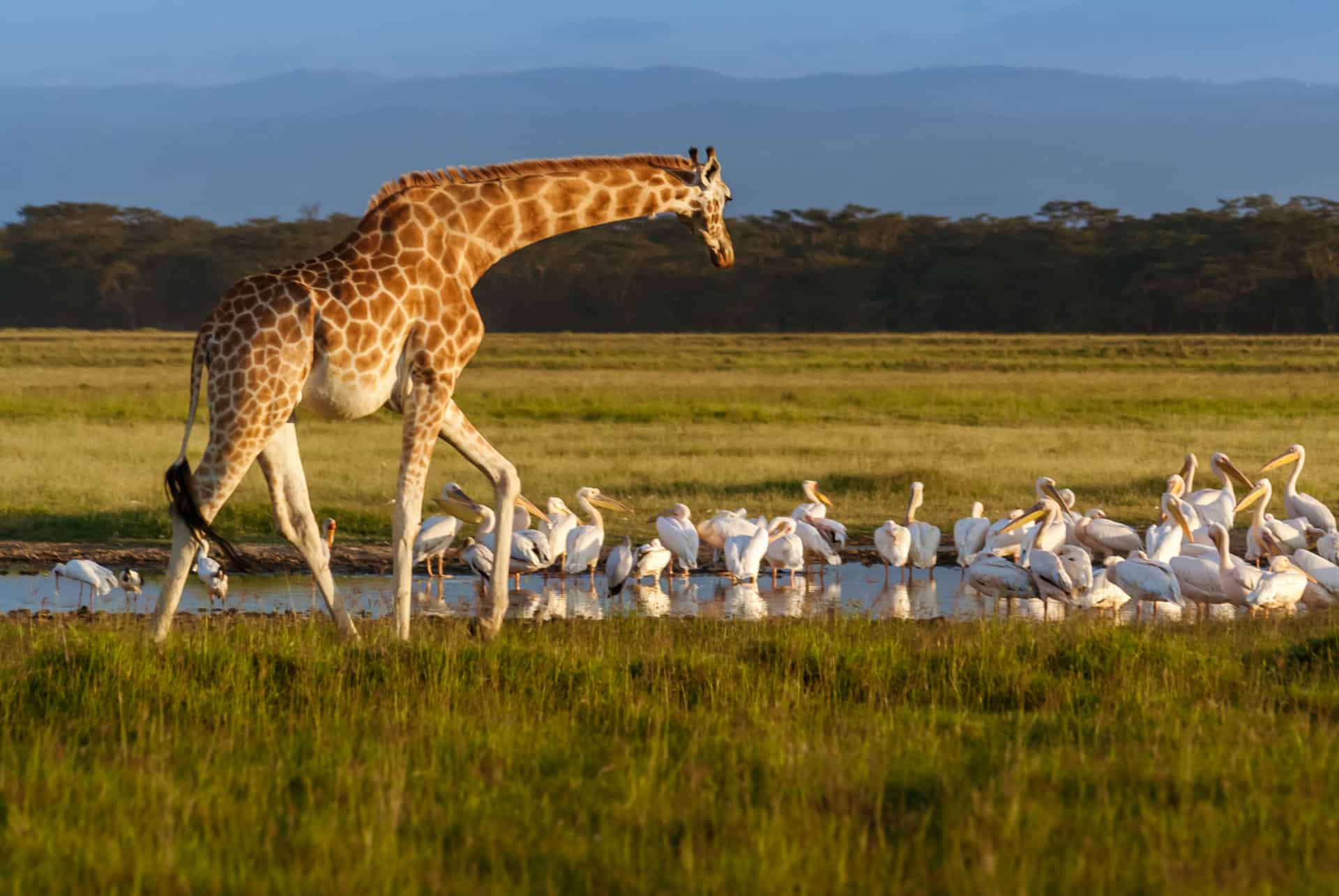
Apart from the birds, one can see a huge number of animals roaming freely around Lake Nakuru: buffalo, hippos, zebras, etc... But the other emblematic species of the park are the white rhino, the black rhino and the Rothschild’s giraffe. And speaking of animals, if you're interested, I've even listed all the Kenyan animals that you might be lucky enough to spot on safari! 🙂
Back to the matter at hand, black rhinos are part of the famous Big Five of Africa – the most iconic animals one can see during a safari on the African continent. They were reintroduced to this national park in the 1980s, and thanks to the efforts of anti-poaching rangers, they are now effectively protected and able to reproduce naturally.
Nakuru is also the perfect place to see Rothschild's giraffes. This giraffe with dark-brown marbled spots can measure up to 19 feet in height (6 m), making it the tallest animal in the world.
When is the best time to visit Lake Nakuru?
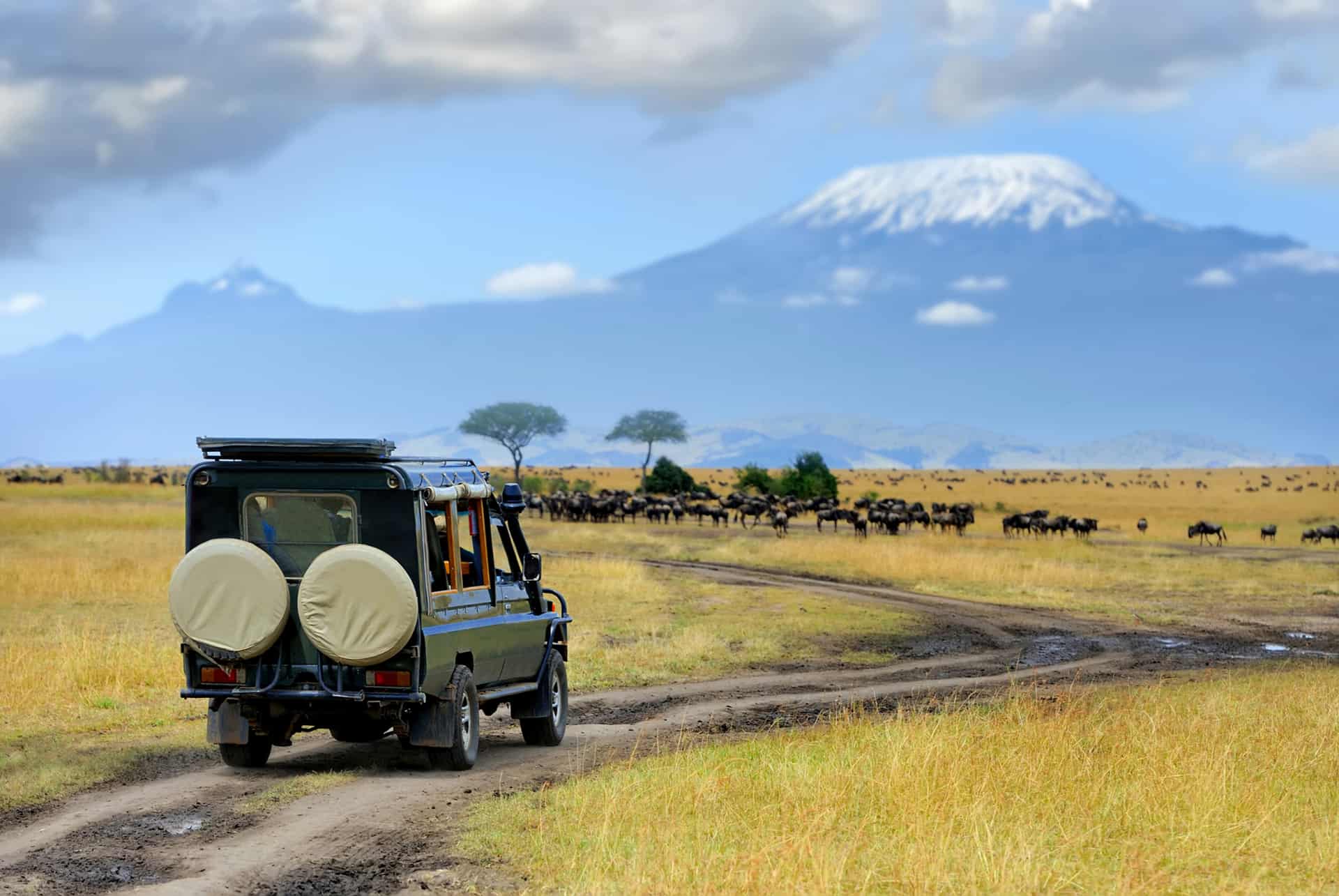
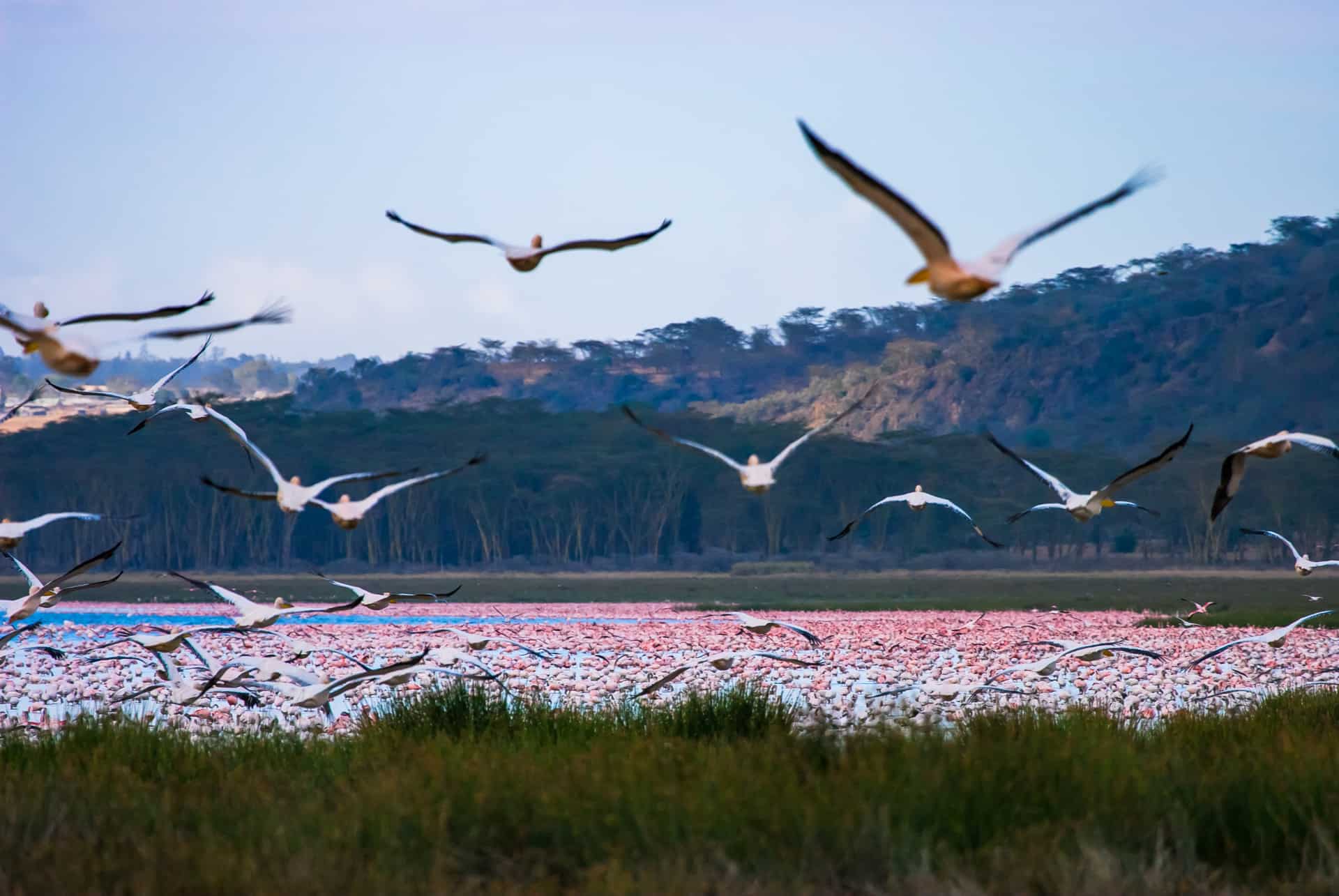
Nakuru National Park can be visited practically all year round, but it's from the end of June and into July that you'll be able to enjoy some of the most spectacular sights. Indeed, it's at this time of year that the concentration of birds is the greatest. It's also the best time of year to travel, if you were wondering when to go to Kenya! 😉
June - July is also the period when you can see animals completing the Great Migration on the plains of the Maasai Mara. Alternatively, the climate between January and March is particularly suitable to visit Lake Nakuru.
Actually, it's only in April, May and November, at the height of the rainy seasons, that weather conditions can be complicated by heavy rainfall.
How to get to Nakuru National Park?
Lake Nakuru lies around 93 miles northwest of Nairobi, Kenya's capital, very close to the town of Nakuru (150 km). With around 400,000 inhabitants, Nakuru is the country's 4th largest city.
Its proximity to the capital makes it an easily accessible place to explore on a day trip. The town of Nakuru is also a good place to stop for a night.
The most common way to reach the park is by road. Indeed, access is much simpler than for many other Kenyan parks and reserves, as you can take the Nairobi-Nakuru highway. The journey from central Nairobi to Lake Nakuru takes around 3 hours. This trip can be made with a rental car, or by contacting a local agency and taking advantage of the services of a guide who will also act as your driver.
Lake Nakuru National Park is also accessible by air, with domestic flights from Nairobi's airports (Jomo Kenyatta International Airport and Wilson Airport) to the Naishi airstrip.
There are two ways into Nakuru Park: to the north via Lanet Gate and to the east via Nderit Gate.
What else can be done in the Nakuru region?
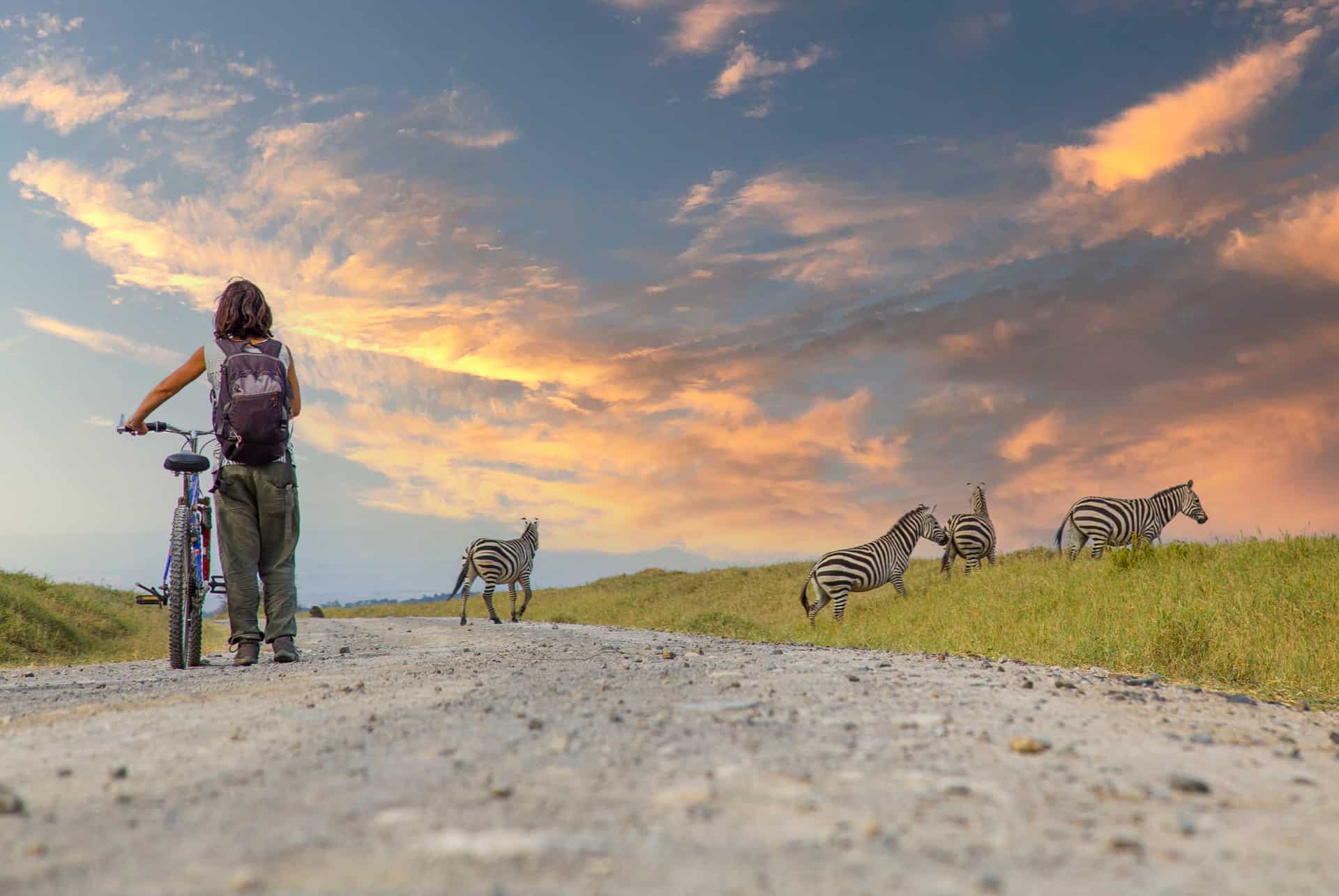
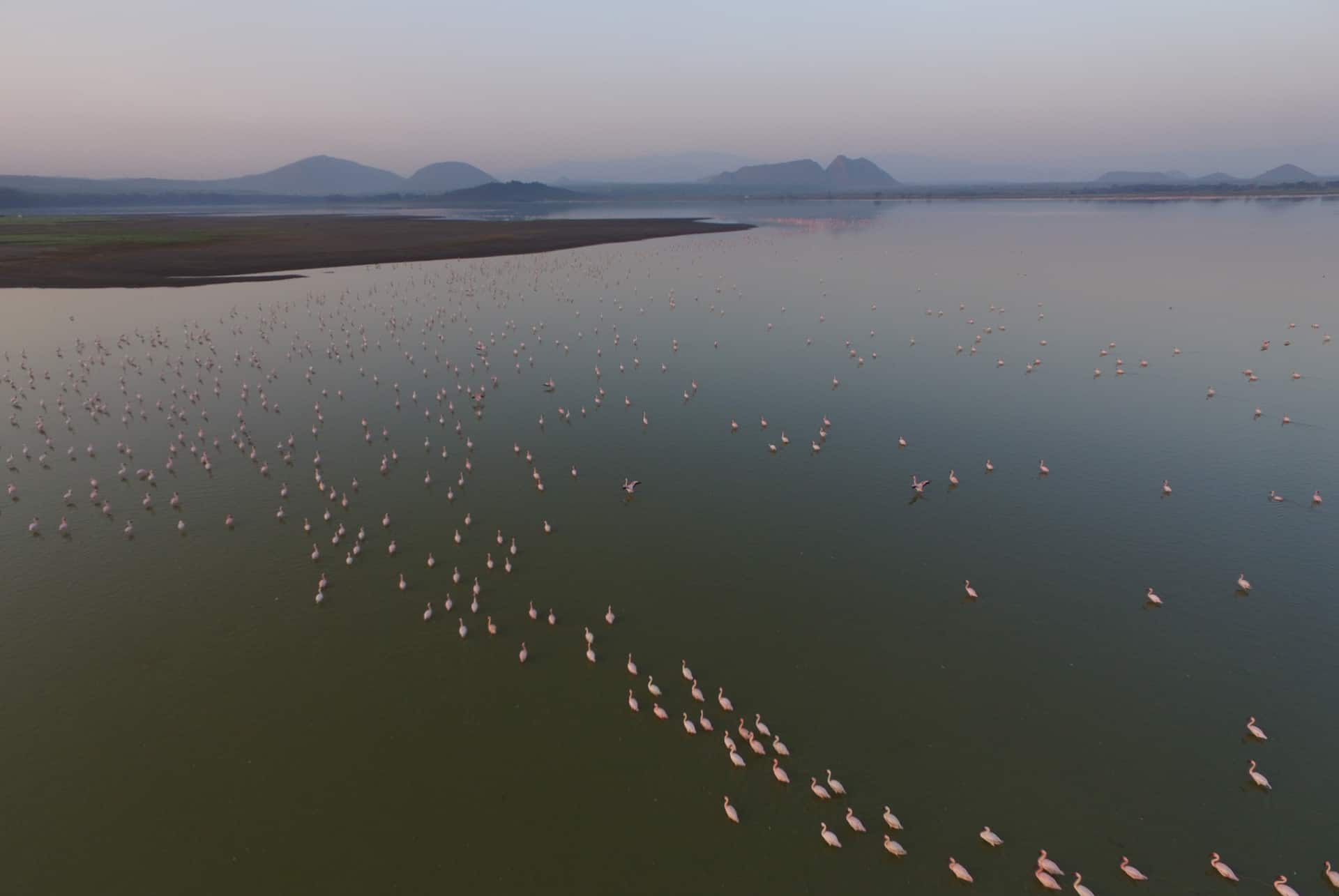
In the vicinity of Nakuru National Park, you'll have the opportunity to enjoy other outstanding attractions. In the very south of the park, you can discover the Makalia Falls, a beautiful waterfall located where the Makalia River flows into the lake. The falls are easily accessible by car.
What's more, the Great Rift Valley is a series of faults and volcanoes known for being home to a large number of lakes, two of the most important of which can be found nearby:
- Lake Naivasha, a freshwater lake at the foot of a volcano, some 63 miles from Nairobi (100 km).
- Lake Elementaita, a saltwater lake 74 miles northwest of the capital (120 km).
These two lakes are home to a large number of animals, including gazelles, zebras, rhinoceroses, giraffes, buffaloes and hippos, as well as a huge number of birds.
South of Lake Naivasha, about halfway between Nairobi and Nakuru, you can also discover Hell's Gate National Park, a popular nature reserve for animal and bird watching. You can also enjoy a variety of activities (hiking, biking, horseback riding...) 🤩
How much does it cost to visit Nakuru National Park?
If you go on safari to Lake Nakuru through a local agency, entry will be included in your tour, along with a vehicle and a guide to drive you in the park. On the other hand, if you're organizing the whole trip yourself, you'll need to buy an entrance ticket before you can enter Lake Nakuru park.
For non-Kenyan residents, the entry fees for Nakuru National Park are as follows:
- 1,030 KSH, just under $10 for adults,
- 515 KSH, just under $5 for children (aged 3 to 18).
Entry fees can be paid on site in dollars or Kenyan shillings. A fee is also charged for any vehicle entering the park. An additional KSH 300 ($3) is charged for a conventional car with less than 6 seats, and an additional KSH 1,030 ($7) for a vehicle with 6 to 12 seats.
In addition to these entry fees, there are other charges for certain activities:
- Horseback riding: between KSH 1,030 and KSH 2,600 per person (approx. $7 to $19),
- Walking safaris: KSH 1,500 per person (approx. $11),
- Guided tours: 1,720 KSH ($12) per guide for 4 hours and 3,015 KSH ($21) beyond that.
Where to stay around Lake Nakuru
There are several options for spending the night close to or inside the park – either before or after your visit to the lake:
Classic hotels in the town of Nakuru will do just fine. What’s more, this park can be visited in half a day, so you can even explore it from Nairobi, where you'll also find a good variety of hotels.
Lodges offer a comfortable way to spend a night in the heart of the park or right next to it, while enjoying a privileged setting and a high level of comfort. They are made up of luxurious, well-equipped bungalows or tents, with other facilities at your disposal (swimming pool, bar, restaurant...). Some lodges can also be found in the town of Nakuru, if you would rather not spend a night in the park.
Campsites are perfect for adventure-seeking travelers who don't want to break the bank on accommodation. You can spend a night in the wilderness! Comfort is more precarious, but these rest areas are nonetheless equipped with the essentials: running water, sanitary facilities and sometimes even other commodities.
0 Comments